#environmental education
Text
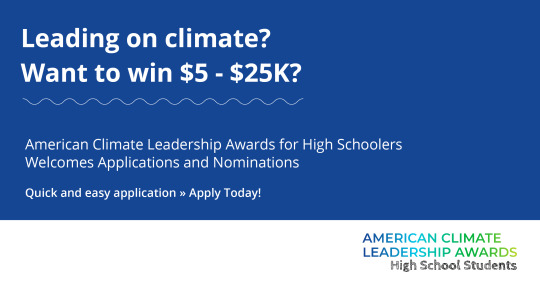
Last call: It's the final week to apply for the American Climate Leadership Awards for High School Students! Apply by Friday, December 15, at midnight PT!
ANNOUNCING: American Climate Leadership Awards has a new category for high school students working towards local climate solutions! @ecoamerica is awarding $125K in cash prizes to student climate leaders. Apply by 12/15: https://ecoamerica.org/american-climate-leadership-awards-high-school-2024/
#ACLA24HighSchoolStudents#ACLA24#high school#high school students#school#education#climate education#environmental education#climate and education#environment and education#climate action#climate and environment#climate#climate and health#climate blog#climate change#climate justice#climate news#weather and climate#environmental news#environment#environmental awareness#environmental activism#environmental justice#environmental#environment protection#environment and health#environmental health
8K notes
·
View notes
Text

Left to right: polar bear, grizzly bear, black bear
#polar bear#polar bears#bears#mammals#wildlife#skulls#animal skulls#animal bones#vulture culture#wildlife biology#anatomy#animal anatomy#nature#naturalist#zoo animals#zoo education#environmental education#north american wildlife#north america#bear#black bears#black bear#grizzly bear#grizzlies#grizzly bears#nature photography#photography#mine#ecology#wildlife biologist
226 notes
·
View notes
Text
I genuinely get a little upset when people talking about saving the bees. Not because I think the bees aren’t worth saving, but because people are only performative and don’t actually know anything.
When most people say “save the bees” they mean honey bees, and this is quite apparent since many of the reasons they say this is because “we’ll lose honey” if we don’t. But they don’t even know that the honeybees aren’t native to the US (they were brought over with our colonizers. Funny, even their bugs were colonizers) and are in fact competitors to native wildlife. We don’t have to worry about saving honey bees because corporations already want to do that. Honeybees are essential to pollinating plants for large scale fruit and vegetable growth for supermarkets, so the corporations who sell these crops won’t let them die out. What we need to worry about is the native species which are dying, some of which due to the introduction of honeybees to our continent. Honeybees don’t even do most of the pollinating outside of corporations, especially with native plants which we need to conserve.
Did you know that fireflies are going extinct? A lot of different actually native bees are too, and a bunch of other insects that help to pollinate. Birds and small mammals are a big part of pollination, and we’re losing a lot of those too.
But again, people just want to wear a shirt that says “save the bees” and buy honey infused soap or whatever, because it’s a trend, not because they’re actually wanting to help save our environment.
#honey bees#save the bees#save the bats#save the butterflies#save the world#save the earth#save the environment#pollinators#firefly#fireflies#lightning bug#environmental education
66 notes
·
View notes
Text
Role of Nature Interpretation in Environmental Stewardship
Before starting this course and my placement as an Outdoor Education Intern, I put greater emphasis on scientific evidence as one of the most important ways to get people to care about environmental issues. I thought that if everyone knew the alarming facts of climate change or the rapid decline of wildlife, people would strive to make the drastic changes needed to address these issues. However, by focusing on only the science many people become disinterested or so overwhelmed that they feel powerless. Whether at a National Park, school or online forums, nature interpretation programs allow people to build emotional connections to nature while learning about the natural world and the importance of sustaining the earth's resources.
While working as an Outdoor Education Intern at the Etobicoke Outdoor Education Centre (EOEC) for my first 4-month co-op placement, I got to work with Toronto District School Board kids from grades 4-8. School groups would visit EOEC for three days where they got to take place in curriculum-based outdoor programs. Additionally, during the school trips students participated in an ecological footprint challenge that focused on reducing food waste and water and energy conservation.
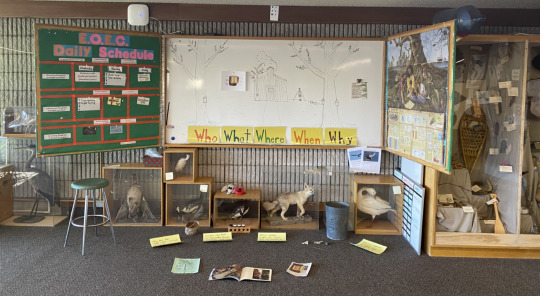
A picture I took of the main classroom at the Etobicoke Outdoor Education Centre.
At the start of my placement, I remember feeling disheartened by the number of kids who showed little interest and even apathy for being outdoors. I would wonder how these kids could not love being surrounded by the beautiful natural world. I quickly realized that many of these kids had never spent extended periods outdoors. This was due to limited access to the outdoors because of location, financial reasons and other limitations. These kids had little opportunity to gain a connection to nature, so it only made sense that few of the students had positive feelings toward natural environments. However, every week during this co-op placement, I got to help students with varying levels of outdoor experience explore new activities and gain a greater appreciation for nature, which was truly fulfilling.
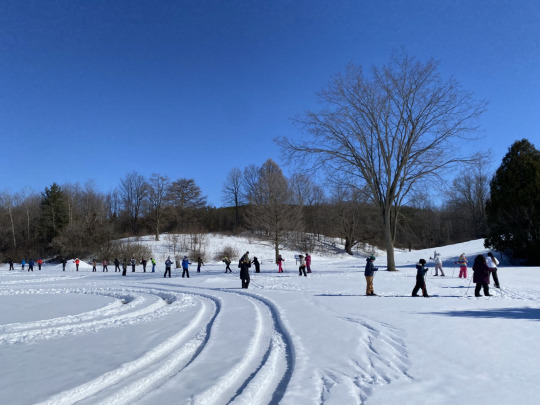
A picture of a school group cross-country skiing at EOEC. This was many of the student's first-time cross-country skiing.
This course has allowed me to reflect on my time as an outdoor education intern and better understand the significance of nature interpretation in Environmental Education. As emphasized by Beck et al. (2019), interpreters work to communicate to people the importance of resources in a way that forges emotional and intellectual connections. Environmental education should provide emotional context that allows people to think ethically, creatively, and critically about environmental issues, solutions, and personal environmental stewardship (Wals et al., 2014). Environmental education is a form of nature interpretation that connects people emotionally with nature while providing them with tools to better understand environmental problems and solutions.
Connecting scientific knowledge with place-based and indigenous knowledge is essential for getting people to actively engage in sustainability (Wals et al., 2014). Nature interpretation programs such as those at outdoor education centres and National Parks create positive emotions toward nature and provide people with a sense of place (Beck et al., 2019). Nature interpretation provides individuals with the emotional connections and curiosity that allow people to appreciate the environment. Through interpretation, people may be inspired to learn more about nature and find ways to participate in environmental stewardship daily.

This is a board students used to track their class's eco-footprint challenge results while at EOEC. Students tracked the amount of food waste produced at the end of each meal, how many lights were left on before each program and water usage.
Additionally, nature interpretation programs that supply individuals with chances to engage in stewardship efforts on their own help people continue to build strong relationships with the environment. For example, in Washington Wachira’s Ted Talk, For the Love of Birds, he conveys to the audience the beauty and significance of birds by touching on the formative experiences that led him to his passion for birds (2017). Near the end of the TED Talk, Wachira tells the audience about citizen science programs around the world that people can take part in to help bird conservation efforts. This is an excellent way to show people that they too, have the power to help protect wildlife.
Citizen science enables people to participate in environmental stewardship by assisting with scientific research within their communities (Merenlender et al., 2016). Citizen science is a part of environmental education that further develops a person's scientific knowledge and sense of place in a fulfilling way (Merenlender et al., 2016). Like the eco-footprint challenge students participate in at EOEC, citizen science allows people to feel like they can take part in meaningful environmental stewardship efforts that make a difference.

Providing people with profound experiences outdoors through nature interpretation, environmental education, and citizen science is vital to environmental preservation. Nature interpretation provides the spark of inspiration needed to see the beauty in nature and the desire to preserve the environment that science alone cannot provide.
References
Beck, L., Cable, T. T., & Knudson, D. M. (2019). Interpreting cultural and natural heritage: For A Better World. Sagamore Publishing.
Merenlender, A. M., Crall, A. W., Drill, S., Prysby, M., & Ballard, H. (2016). Evaluating Environmental Education, citizen science, and stewardship through naturalist programs. Conservation Biology, 30(6), 1255–1265. https://doi.org/10.1111/cobi.12737
Wachira, W. (2017, August). For the love of birds. Washington Wachira: For the love of birds | TED Talk. https://www.ted.com/talks/washington_wachira_for_the_love_of_birds
Wals, A. E., Brody, M., Dillon, J., & Stevenson, R. B. (2014). Convergence between science and environmental education. Science, 344(6184), 583–584. https://doi.org/10.1126/science.1250515
4 notes
·
View notes
Text
Amazon job Work from Home Part Time & Full Time Jobs
Attention makeup mavens! 💄✨ Looking for a gig you'll love? We're hiring staff to package makeup items for Amazon. Earn a competitive salary while indulging in your passion. DM for details! This is job only for USA. ✅Here are all details
#ACLA24#ACLA24HighSchoolStudents#youtube#youtube video#climate leaders#climate solutions#climate action#climate and environment#climate#climate change#climate and health#climate blog#climate justice#climate news#weather and climate#environmental news#environment#environmental awareness#environment and health#environmental#environmental issues#environmental education#environmental justice#environmental protection#environmental health#high school students#high school#youth#youth of america#school
2 notes
·
View notes
Text
So over spring break I went to the Pennsylvania Association of Environmental Educators Conference, which was up in the Poconos this year, and oh boy it was amazing!!!
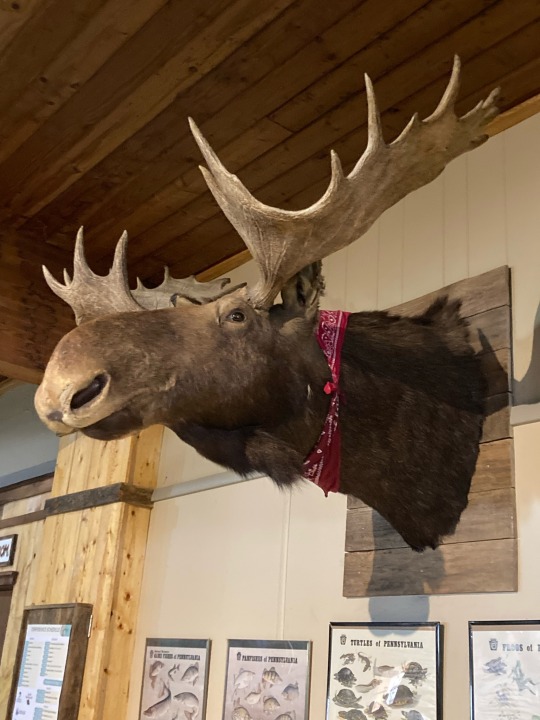
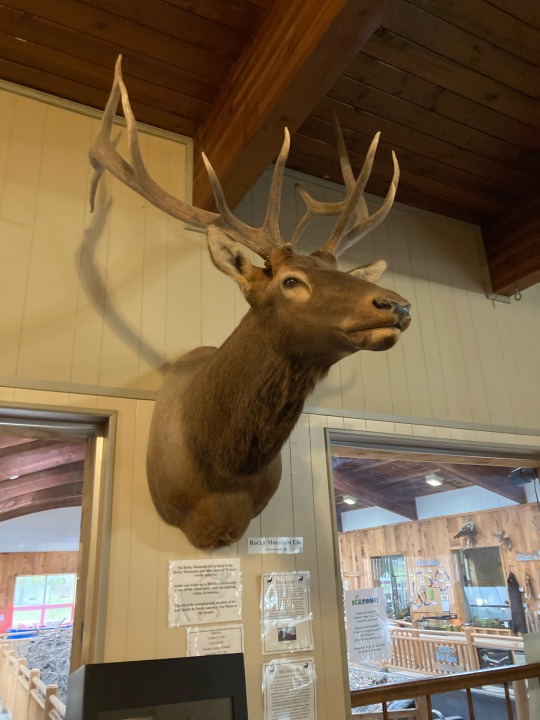
I had so much fun at the conference and am so grateful for my job and my university for providing me with the opportunity to go to this great event! Even though I don’t want to go into the Environmental Education field professionally, I still want to incorporate it in my teaching methods once I become a full time teacher, and this conference had lots of amazing seminars that had a lot of interesting topics that were still incredibly useful to me as an Early Childhood Education major.

There were also just a bunch of cool things that I got to do and see during this trip! Like seeing all the taxidermy animals at the nature center (I always forge how big elk are till I’m standing underneath a disembodied head of one of them).
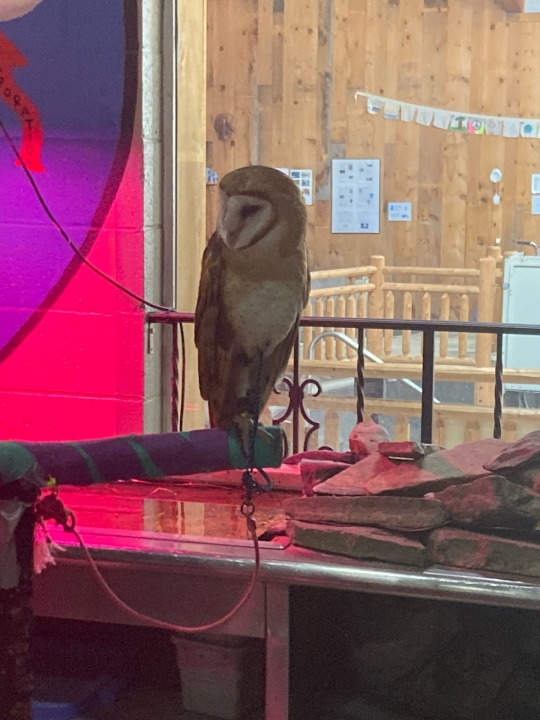
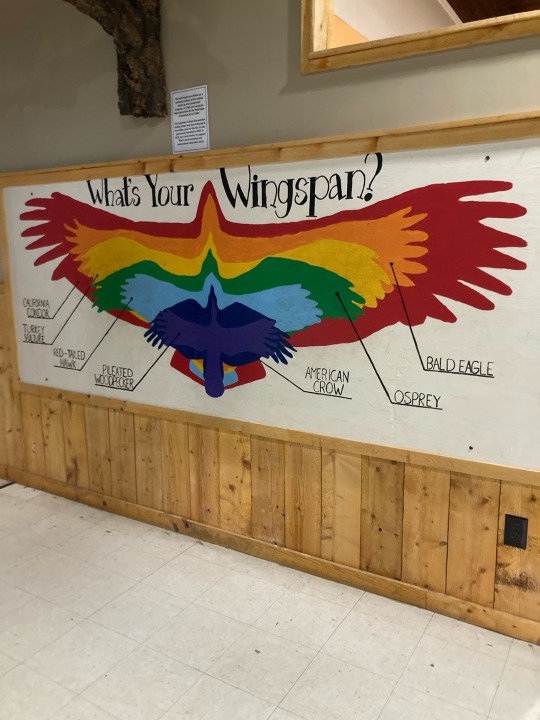
I also saw this cool Barn Owl named Soaren who was with this animal rescue organization that had a booth at the event, though he wasn’t a rescue and was a captive bred animal ambassador. There were also a pair of Southern Flying Squirrels and a Milksnake but I didn’t get any good pics of them. They didn’t have names either since they’re gonna be released once it warms up.
On the first day we also went on a night hike and saw this amazing beaver swimming in the pond next to the center! It was a magical experience seeing beavers in the wild for the first time and I’ll definitely never forget it!!! 🦫
2 notes
·
View notes
Text
The Urgency of National Wildlife Week: A Call to Action for Biodiversity Preservation
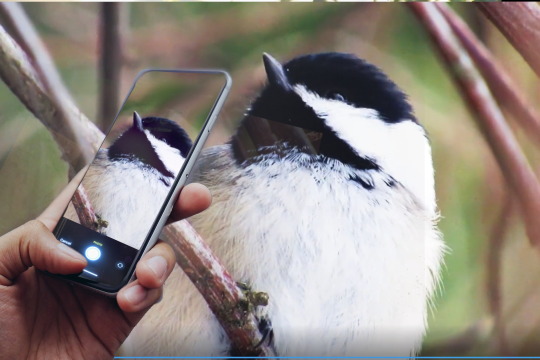
View On WordPress
#advocacy#afforestation#afforestation areas#biodiversity#Buddy System#Citizen Science#citizen scientists#City Nature Challenge Events#Climate Action#climate change#Community Empowerment#Community Engagement#conservation#conservation awareness#Conservation Efforts#conservation initiatives#Eco-Quest Projects#ecological balance#Ecological preservation#Ecological Restoration#ecosystem health#Ecosystem Restoration#endangered species#Energy Use#environmental awareness#environmental challenges#environmental conservation#Environmental Education#environmental impact#Environmental Management
2 notes
·
View notes
Text
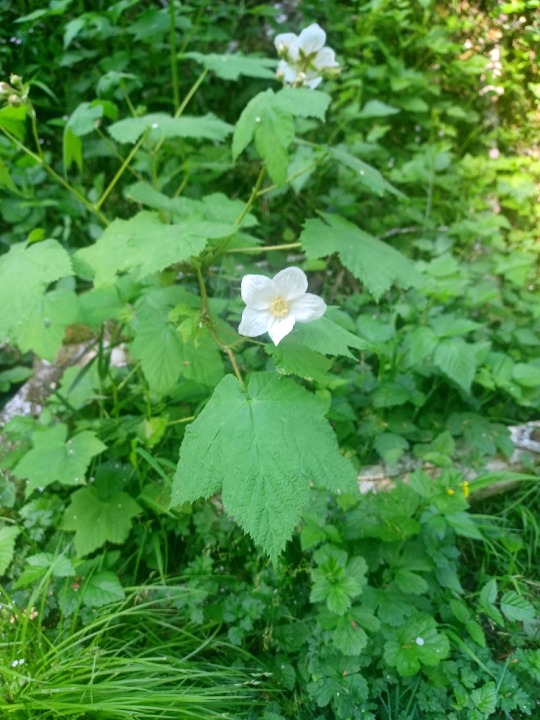
Hey, if you're in the Columbia-Pacific region of Oregon/Washington, the Friends of Willapa NWR Environmental Education program needs you! Our fourth grade EE students are getting ready for their big field trip to the Refuge near Long Beach, WA at the end of the month (May 30-June 1).
We could use a few more folks to help these kids learn more about the natural history of the Refuge. They've already spent time in class exploring how light, air, water, and soil affect what living beings are found in each habitat, and this is their chance to put that into practice. You don't need to be a scientist or a teacher, just someone with a love of nature who's willing to review the materials they've been using and help them engage their curiosity. We have a training scheduled for May 25, but I'm also doing other trainings for folks who can't make that date.
You'll lead a small group (fewer than 10) students along with a teacher and a parent chaperone around the Tarlatt/South Bay Unit of the Refuge. The students arrive at 9, and need to be back on the bus around 1, but not before they've been able to check out a few stations set up by Refuge staff. You can volunteer for one, two, or all three days, with a different group of students each day.
If you're interested in volunteering, drop me a line here or email Hope Presley at hope_presley(at)fws(dot)gov
#Willapa National Wildlife Refuge#wildlife refuge#environmental education#Long Beach Peninsula#Washington State#ecology#nature#wildlife#volunteering
15 notes
·
View notes
Text
Learning, growing, and sharing the passion🐛🦋(U10)
Reflecting on my journey of developing my personal stance as a nature interpreter, I realize my ethos is deeply rooted in storytelling. While I would absolutely consider myself smart and capable of any challenge thrown my way, I wouldn't claim to be the one to ask for a perfectly articulated summary of a concept, or a history (or stats oh gosh...)) But! I am your girl if you want to talk about animals or nature with the same excitement and perception shifts you had as a kid; when learning about something like dinosaurs or other planets for the very first time and feeling like your mind was blown, or maybe even that the person was just making stuff up because of how wild it seemed.
At it’s core, my passion sings when having the chance to discuss niche topics with open-minds that delve into things like evolution, coming from the perspective that there are so many mysteries out there that could be unraveled if you only cared to look.
Just this week, some of these topics for me and some peers have included trying to understand bird tetrachromacy (how and why they can see in UV), mammals returning to the water like whales and dolphins, or how?? Literally how??? lemurs got to Madagascar.
To me, it's not just about sharing information, but having fun in the process and getting to share what you learn about the animals and their exploits in ways that would rival the wildest fantasy stories.
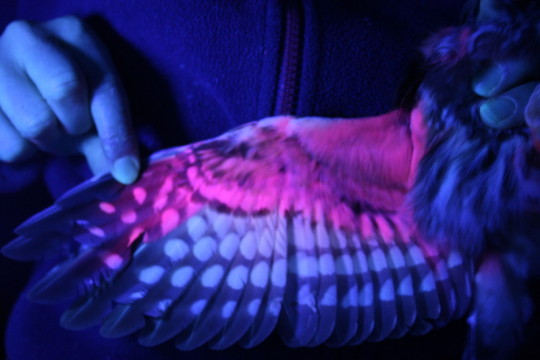
[Saw-whet owl wing under UV💡 ]

[OG whale💪🏻 ]
I've been playfully dubbed the "zookeeper of knowledge" by a friend in this context, after spending far too many hours working on a project because we kept getting side-tracked and discussing things not necessarily needed, but so incredibly interesting. (And it’s probably a title I'd gladly claim if it weren't so corny to be honest.) Regardless, it summarizes my commitment to becoming a curator of the captivating craziness that the animal kingdom has to offer. With a bias but passionate zoological perspective, I strive to share my spark of curiosity. ✨
Beyond my zoology lens, I strive for a focus on eco-consciousness in the work that I do, hoping to bridge the gap between science and the public and to foster stronger connection with Mother Nature.
As for translating these passions to children, I’m a firm believer in both transparency and honesty. While it’s almost guaranteed they won’t enjoy their first climate change lesson, I think forming traits of environmental stewardship and the understanding that actions have environmental consequences in children is critical if we want our passion for nature to be held by future generations. I remember my first lonely polar bear on a drifting ice berg video, and yes I was sad….but it left a vivid mark on my consciousness, shaping my understanding of the environmental challenges we face and it very likely brought me to where I am today.
Speaking of inspiring children, I cannot hold myself back as I have to show you guys what I found last week!

[Zoologist Barbie!!!!!!!!💗💗💗💗💗💗💗💗💗💗💗💗💗💗💗]
I'm not even that much of a Barbie fan but I think now I have to be! I would have exploded with joy if I had this as I kid! I mean, if Barbie is doing it, I can't even imagine how many little girls will now be exposed to the possibility of studying zoology or similar topics and I won't lie...I could cry 🥹 (not to mention how close the koala is to a lemur and my personal goals regarding that....interesting......verrry interesting 🔮)
Though I still think going outside with curiosity in mind is the number one way to develop a relationship with nature, I’d consider things and representations like this even more important in places like cities, where natural spaces are becoming less and less accessible due to never-ending infrastructure and the digital domination of screens and virtual experiences.
The allure of video games and online platforms often out-win outdoor activities at least in my own anecdotal experience, raising concerns about the disconnect between the younger generation and the natural world. I think environmental educators are becoming more and more important in schools, and I believe they play a pivotal role in counteracting this trend, as they offer opportunities for a child to focus on wonders within the natural world. I had a hard time myself trying to sound reasonable to many of my friends and family as a kid when saying I wanted to study animals and nature since technology was progressing so quickly and I was viewed as looking backwards.
and so I think this doll (or things similar) can reinspire or hold that flame when kids aren't yet to sure if they'll find a nice outdoor spot to explore, an educator excited to answer questions, or a community like Guelph that embraces natural sciences so much.
In my opinion, harsh climate crisis truths can surely be sugar-coated for young minds to an extent, but to completely wait until their old enough to ‘actually understand’ is just providing the perfect opportunity for a child to become a distracted or oblivious teenager or adult. Again, this is my opinion but at this point in time, in a current climate crisis with almost no signs of slowing down, being an adult in a country like Canada and purposely ignoring it is NOT cool!!
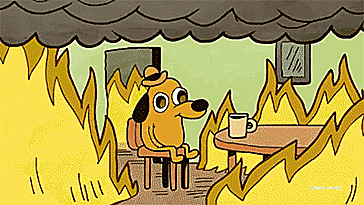
Now, we don’t have to live every moment with the weight of the world on our shoulders, and I don’t wish that on anyone! But I believe the absolute bare minimum is to consider our actions in relation to nature and provide the next generation the building blocks and exposure they'll need to make environmentally conscious choices. Concepts like reusable water bottles over disposable plastic ones, not littering, and realizing our planet belongs to others too aren’t scary things and if anything, promote cultures of care and community. These seemingly simple ideas start to lay the foundation for responsible and conscious individuals to gladly carry the torch of environmental awareness into the future!
Anyways, that's what's up with me, and so I hope you've found at least one thing on my blog that made you think about, reconsider, or learn something, and maybe even want to go hug a tree 💝🐛
Works cited
Johnson, N. A., Lahti, D. C., & Blumstein, D. T. (2012). Combating the Assumption of Evolutionary Progress: Lessons from the Decay and Loss of Traits. Evolution Education & Outreach, 5(1), 128–138. https://doi.org/10.1007/s12052-011-0381-y
Northern saw-whet owl outstretched wing under blacklight, by Seabrook Leckie, Attribution-NonCommercal-NoDerivs 2.0 Generic license, https://www.flickr.com/photos/rustyblackbird/
#nature interpretation#envs 3000#nature#zoology#zoologist barbie#climate change#environmental outreach#environmental education#barbie
3 notes
·
View notes
Text
Don’t toss that pumpkin in the trash: Seven ways to use your pumpkin after Halloween instead of putting it in a landfill
Every year, Americans throw away over 1 billion pounds of pumpkins destined for landfills where they decompose and generate methane gas that contributes to climate change. Michigan produces 79 million pounds of pumpkins every year, ranking fourth in the nation.
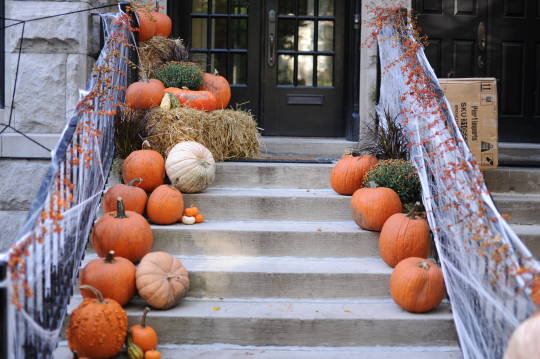
Instead of tossing your whole or jack-o’-lantern pumpkins in the trash, consider these alternatives to use them in a more sustainable way.
Here are seven ways to get more use out of your pumpkins/pumpkin parts:
Bake it and make pumpkin puree to use in baking, cooking, or yummy smoothies!
Make roasted pumpkin seeds.
Donate pumpkins to feed animals. Check with local municipalities, farms, and zoos to see if they can use your pumpkins to feed their animals.
Drop-off pumpkins and jack-o’- lanterns at community collection sites that will compost them. Check with area municipalities and universities for special Halloween-related drop-off sites. Also, check EGLE’s recycling directory that lists locations that take food scraps. (Just type " food scraps" into the field where it says, "What are you looking to recycle?" Before taking your jack-o'-lantern there, be sure to verify the location’s collection details and policies.)
Find a commercial food waste collection service that will pick up pumpkins and other food scraps from your home for composting. Food waste collector My Green Michigan was recently highlighted in an EGLE video.
Make it a tasty snack for wildlife by just letting it be in your garden or a wooded area in your yard.
EGLE Compost Program Coordinator Aaron Hiday encourages Michiganders to compost their pumpkins if they have the space. “You can mix your pumpkins with your fall leaves in a bin to create compost that will help nourish your own soil next spring,” he says. EGLE’s handy guide, Home Composting: Reap a Heap of Benefits, provides helpful information, and more composting tips are highlighted in this EGLE video.
To learn more about composting, visit Michigan.gov/EGLECompost. To learn more about food recovery, visit Michigan.gov/FoodWaste.

Source: EGLE Newsroom
2 notes
·
View notes
Text
youtube
Watch the 2024 American Climate Leadership Awards for High School Students now: https://youtu.be/5C-bb9PoRLc
The recording is now available on ecoAmerica's YouTube channel for viewers to be inspired by student climate leaders! Join Aishah-Nyeta Brown & Jerome Foster II and be inspired by student climate leaders as we recognize the High School Student finalists. Watch now to find out which student received the $25,000 grand prize and top recognition!
#ACLA24#ACLA24HighSchoolStudents#youtube#youtube video#climate leaders#climate solutions#climate action#climate and environment#climate#climate change#climate and health#climate blog#climate justice#climate news#weather and climate#environmental news#environment#environmental awareness#environment and health#environmental#environmental issues#environmental education#environmental justice#environmental protection#environmental health#high school students#high school#youth#youth of america#school
4K notes
·
View notes
Text
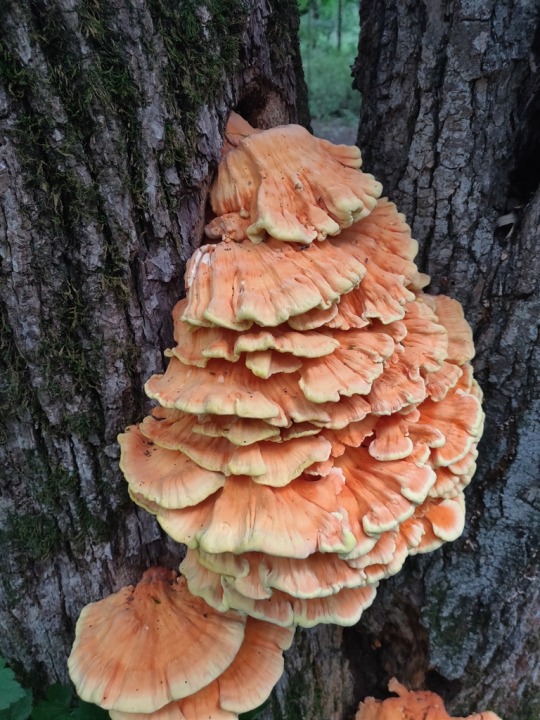


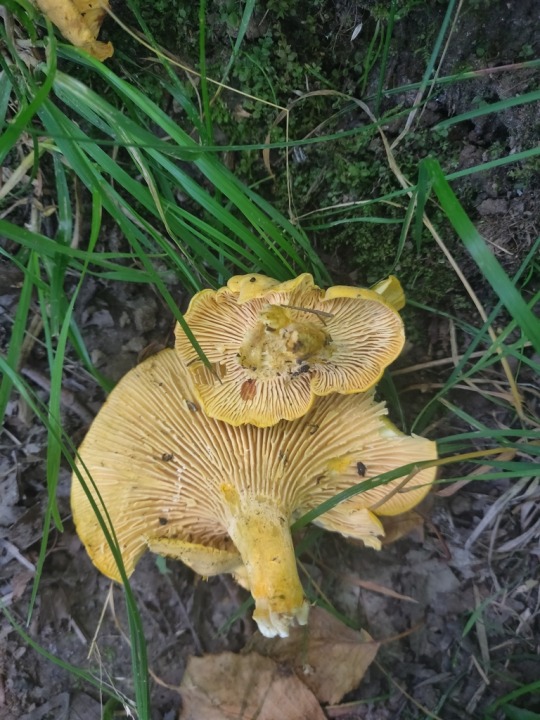
Some edible mushrooms I've found (and foraged) recently! Chicken of the woods, pheasants back, lobster, and golden chanterelles. Unfortunately no morels for me this year, and I'm still looking for oysters
Disclaimer: please do not eat random mushrooms if you are not 100% certain about the identification
#edible mushrooms#wild edibles#foraging#foraged food#forager#mushroom#mushrooms#chicken of the woods#chanterelle#oyster mushrooms#lobster mushroom#pheasants back#morel#morels#fungi#fungus#ecology#nature#naturalist#environmental education#nature photography#north america#midwest#forest#united states#mine#photography#biology#mycology
120 notes
·
View notes
Text
One of the things I miss about teaching middle schoolers is when you give your students just a morsel of a brain worm and they are silent, and then the gears start going and they just take off and the rest of the 80 minutes was just me following them around outside as they try to find things to answer their friends questions or the groups questions.
And I’m just there to ID things or just to say “yeah you can touch it” or “You probably shouldn’t touch that.” or “yeah dont touch that.” or “I’m pretty sure I’ve told you guys what this is several times already, does anyone remember what this is or would you like a hint?” or “Oh hey I know you guys are looking for xyz, but look what I found! Check it out!”
And they’d flock to see. I miss that. I miss just watching them play, learn, lead, problem solve with curiosity.
One parent observed me and was upset that I wasn’t “Teaching”, before I could say anything, one of the kids shouts to the son and tells him what his mom had just said, and he snaps his eyes over at her and tells her to take it back because he had learned all about the “weird shit that’s outside” that he’s not afraid anymore and can have more fun without worrying about getting bit or stung.
#environmental education#education#environment#nature education#nature lessons#nature#teaching#students#middle school#thinking#curiosity#brain worm#play#problem solve#hike#playing outside#outside
2 notes
·
View notes
Text
Instructional Technology and Design Philosophy
I have always had a fascination, love, and passion for education. My experiences growing up were not the typical childhood education experiences. I grew up on a small island off the coast of North Carolina where I could often be found playing on the beach, in the woods, or by the sound. Our educational experiences on the island included marine biology and other non-traditional education experiences. This is what helped develop my love for the environment, environmental education, museums, and museum education. The island was home to both a lifesaving station museum and lighthouse museum. Many of my childhood school field trips were to these museums where I developed a love for learning through museum education. Museum and environmental passions have been woven throughout the rest of my life in various ways whether living on a military base visiting various base museums or enjoying nature programs at various museums. It wasn’t until my internship with Wyoming Wildlife Advocates and AmeriCorps in 2020 that I realized I wanted to become an instructional designer for a museum or with a school in regards to environmental education. Because we were in the middle of COVID-19 pandemic, this was a virtual internship. During this virtual internship, I helped to develop school age programs, both in person and virtual, regarding wildlife education and loved every minute of it. This is when I realized I wanted to pursue a career within the ITD field.
Instructional Design. Mercadai (2021) states that instructional design involves the practice of establishing the goals within instruction and what each learner requires, then being able to develop the groundwork and bridge between the two. Technology is a way to create a bridge between the two. The purpose of using instructional technology in museum education and schools is to enable students to learn and understand concepts with a variety of tools. Using technology within a museum education or school setting allows learners an opportunity that normally would not present itself in the traditional setting. I believe that instructional technology creates an avenue of multiple learning experiences which can help foster a level of learning that just using a traditional lecture style may not. I believe this is important. In the early 1900s, roots of instructional technology and design began with school museums followed by the use of educational television in the mid 1900’s. During the 1980’s, many students were exposed to computers in schools. 1991 changed the instructional design and technology field by the development of the world wide web (An, 2021). By the 2000’s social media had become a part of the instructional design and technology and educational history (An, 2021). One can see that the instructional design and technology field has been through vast amounts of change through the years. How do we as instructional and technology designers keep up with that change though and ensure the field continues to grow?
Philosophy. One of the ways I can ensure the ITD field continues to grow is through my own philosophy. By having a solid personal philosophy on instructional design and technology, this will help educate others in a positive and well-rounded manner. I believe each learner has the right to an inclusive, non-traditional, highly motivated learning experience that will expand their knowledge and form a basis for further questioning and want to seek more. My philosophy is based on a combination of theories including Howard Gardner’s multiple intelligence theory, John Dewey’s theory of participatory experience, and Vygotsky’s proximal development and scaffolding theories (Porcello, 2017). Gardner’s multiple intelligence theory states that “human beings have different ways in which they process data, each being independent” (Slidemodel, 2021). I believe Gardner’s theory of multiple of intelligence can be used within educational technology to have learners figure out what they are best at within that lesson and encourage their creativity. John Dewey’s theory of participatory experience states that “ education is learner based. Learning through experience is important” (Porcello, 2017). Porcello (2017) stated that “visitors want more engaging activities” within museum education. I believe educational technology is the perfect way to create this experience both at the museum and virtually, or within a classroom at a school. Vygotsky’s theory of proximal development and scaffolding states that “learning is social” and “students learn more through individuals who are more informed” (Porcello, 2017). Educational technology can help me build products and service, whether within a museum education or classroom setting, which can collaborative and foundationally fundamental allowing for growth.
My own personal philosophy also aligns with Moore’s (1989) Theory of Interaction. I believe educational technology allows for a more non-traditional approach to education, whether in museums or schools. By allowing people to learn not only through the content being created and through an instructor, but also by allowing the learners collaboration with each other, this will increase the learning experience. Bates (2015) SECTION model has now become a guide in assisting in the selection of educational technology tools. I now recognize that my own time is a valuable asset in the educational technology selection process.
By having a solid personal inclusive philosophy within educational technology and instructional design, this will help enhance the instructional design and technology field.
Reference:
An, Y. (2021). A history of instructional media, instructional design, and theories.
International Journal of Technology in Education (IJTE), 4(1), 1-21.
https://doi.org/10.46328/ijte.35
Mercadai, T. (2021). Instructional Design. Salem Press Encyclopedia.
Moore, Michael. (1989).Three Types of Interaction. American Journal of Distance Education. 3. 1-7. 10.1080/08923648909526659.
Porcello, J. (2017). Education Theories in Museums. https://sites.google.com/site/educationtheoriesinmuseums/
Slidemodel. (2021). Gardner’s Theory of Multiple Intelligences: 8 types of intelligences. https://slidemodel.com/gardners-theory-8-multiple-intelligences/
2 notes
·
View notes
Text

different kind of reading for this class - I think the take-away here is that it's important for everyone to "encounter amphibians"!
Dillon, J. (2014). 25. Environmental Education. In Handbook of Science Education Research - Volume II.
4 notes
·
View notes
Text

We are always happy to share our maps for free with NGOs and educational programs that fight for important environmental issues all around the world. Being involved in these amazing projects is not only a humbling experience, but it's an essential part of Grasshopper Geography, too. We created a page to show you these past collaborations, please check them out here if you have a minute: https://www.grasshoppergeography.com/pages/collaborations
#ngo#ngo projects#collaborations#geography#climate awareness#climate action#environmental conservation#environmental education
2 notes
·
View notes